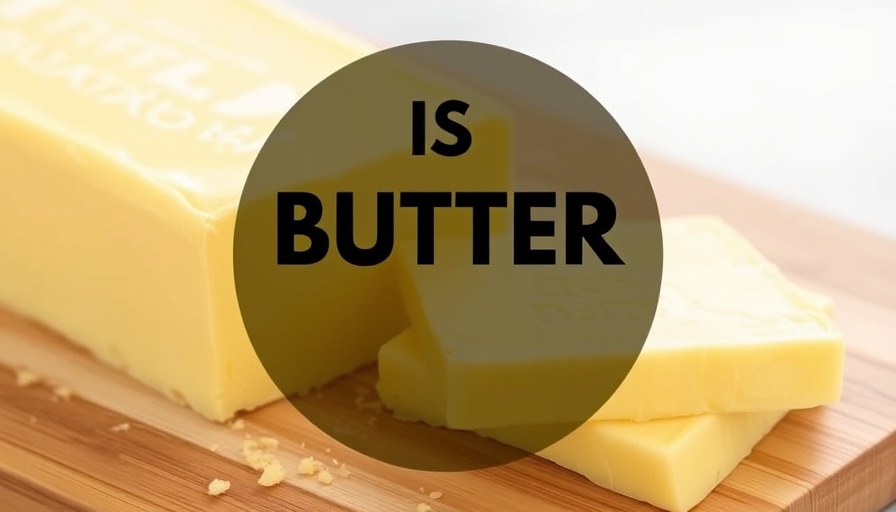
Understanding Butter: Myths Unveiled
Is butter bad for you? This age-old question can spark spirited debate at any dinner table! Butter has historically faced an interesting love-hate relationship with health enthusiasts. Once vilified for its high saturated fat content, it later became a darling of the "natural" foods movement. But the reality is a bit more nuanced. While butter adds a rich flavor and texture, understanding its nutritional profile can help navigate its place in your diet.
What’s Really in Your Butter?
Delving into its composition, butter is made by churning cream until the fat separates, yielding a product that’s 80% fat. Most of this fat falls into the saturated category, which has been associated with increased cholesterol levels. A measured tablespoon of butter brings roughly 100 calories to the table, which can quickly accumulate if we’re not mindful. Additionally, it offers trace amounts of essential fat-soluble vitamins like A, D, E, and K. However, unless one is consuming large quantities, it’s not an efficient means to obtain these nutrients.
The Grass-Fed Butter Highlight
Many health enthusiasts tout grass-fed butter as the superior choice, and for a good reason! Butter from grass-fed cows might contain higher levels of omega-3 fatty acids and conjugated linoleic acid (CLA), which is linked to various health benefits. However, while beneficial, the nutritional differences between grass-fed and conventional butter aren’t drastic enough to completely alter the need for moderation in your diet.
Why Moderation is Key
Despite the benefits, butter remains a high-calorie and saturated fat food. The crucial takeaway is that moderation is vital for incorporating butter into a healthy eating routine. Understanding your dietary needs and limits is an essential part of this, ideally supported by tracking your intake for a clearer picture of overall consumption.
The Fat Debate: Butter vs. Margarine
So where does margarine fit in? Once considered a healthier alternative to butter during the low-fat craze, margarine has its own set of health concerns due to trans fats and artificial ingredients. Recent studies have shown that while unsaturated fats can still be part of a heart-healthy diet, natural options like butter shouldn’t be dismissed outright, provided they’re used sparingly and purposefully.
Future Perspectives: Tailoring Your Diet
As knowledge of nutrition continually evolves, so too does our approach to dietary fats. Shifting towards a balanced view that recognizes the value of both unsaturated and saturated fats can help individuals make informed decisions. For example, substituting butter with healthier fats like olive or avocado oil can contribute to overall heart health while still allowing room for that buttery flavor in certain recipes.
Practical Insights and Tips for Healthy Eating
As part of a well-rounded diet, consider these practical insights: First, diversify your fat sources; incorporate more unsaturated fats from sources like nuts, seeds, olives, and avocados. Second, continue to enjoy foods you love, like butter, but in controlled portions. Third, adopting an overall mindful eating practice can enhance awareness and possibly spark other healthy habits in daily life.
Conclusion: Making Informed Choices
The question of whether butter is bad for you can ultimately be about your personal health goals and dietary needs. By leveraging knowledge and tracking your intake, you can enjoy the flavor and richness butter offers, without compromising overall health. Remember, a balanced lifestyle that prioritizes a variety of nutrient-dense foods will always lead to better health outcomes.
Take time to reflect on your nutrition choices and find a diet that feels good for both body and mind. With so many nutritious options available, there's no reason to feel limited in your culinary adventures!
 Add Row
Add Row  Add
Add 


Write A Comment